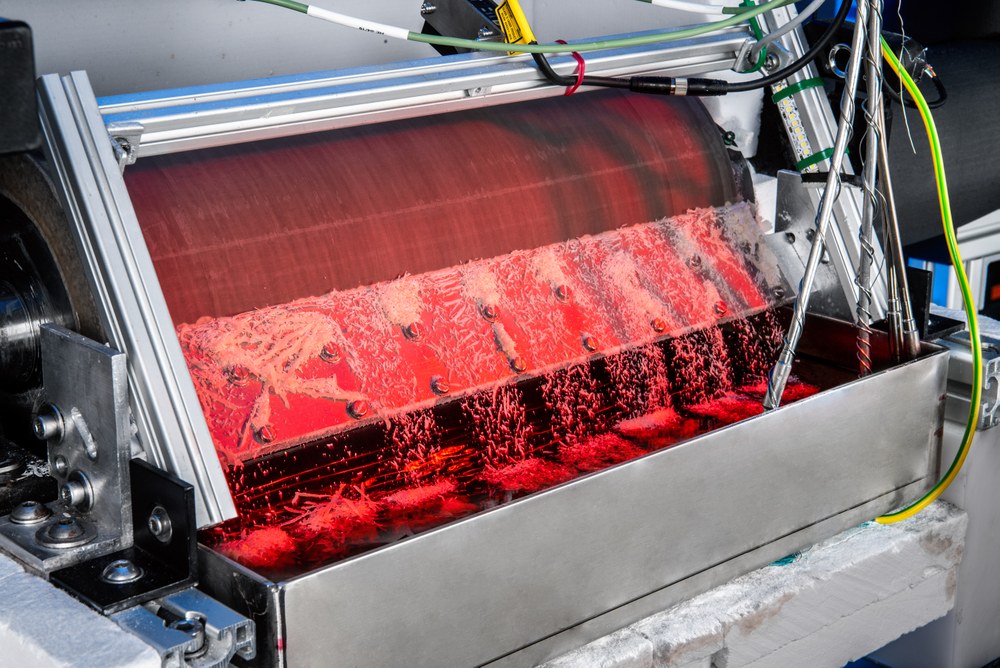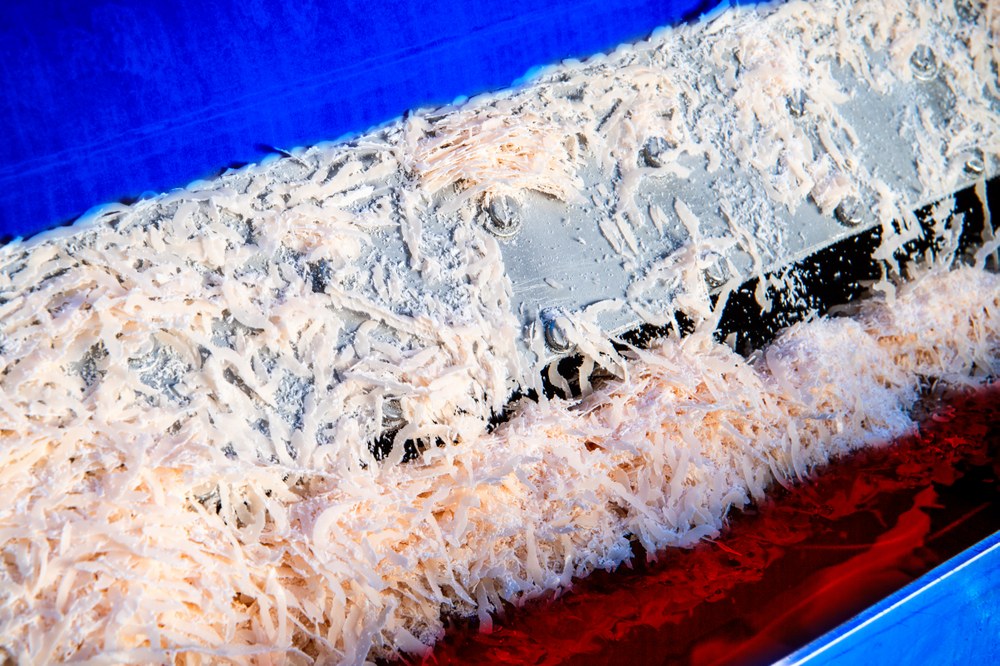ALass
While fluctuating renewable energies such as wind and sun are mainly available in the form of electrical power, more than half of the energy is required in the form of heat. With electrically loaded thermal storage, the demand for thermal energy can be decoupled from the availability of electrical power. Thermal storages are often cheaper and more independent of critical resources than electrical storage.

Latent heat memory with phase change material - good and cheap
One possibility of thermal energy storage is so -called latent heat storage. A high amount of thermal energy can be stored and exertion by using the phase change from firm to the liquid of a phase change material. Cheap and well -available phase change materials for the temperature range of 100 - 350 ° C, which is relevant to process steam are, for example, nitrate salts.
During the loading of a latent heat storage with electricity, the phase change material is melted using the heating conductor and subsequently stored in a "hot" memory tank. During the unloading, the phase change material solidifies on a heat transfer surface. Since this has poor thermal conductivity in the solid state, the heat transfer surface must either be significantly enlarged or the phase change material must be continuously removed from the heat transfer surface.
„Rotating Drum“ – the centerpiece
The centerpiece of an active latent heat storage system is the so-called "Rotating Drum". During the discharge process, liquid phase change material continuously flows from a hot storage tank in liquid state into the basin beneath the drum. Inside the drum, water evaporates and can be made available to an industrial process, while outside the drum, the phase change material solidifies. The solid material is separated from the liquid material by rotation and scraped off the surface of the drum by a scraper, falling into a second "cold" storage tank.

